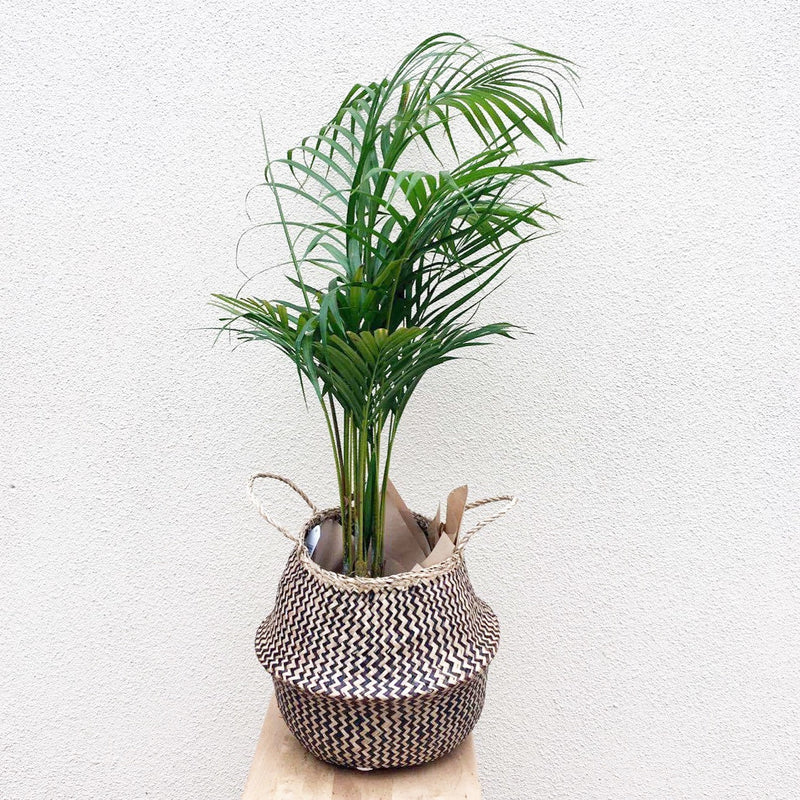
Plant Profile: Golden Cane Palm
Scientific Name: Dypsis lutescens
Common Name: Areca Palm
Native to: Madagascar
The Golden Cane Palm is a classic indoor palm that instantly brings a tropical, resort-style feel to your home. With its elegant golden-yellow stems and feathery green fronds, it’s a favourite choice for brightening up living rooms, offices, and hallways. Not only is it striking, but it’s also known for its air-purifying qualities, making it as practical as it is beautiful.
🌱 Care Instructions
-
Watering: Moderate – Water when the top few centimetres of soil feel dry. Avoid letting it sit in water, but keep the soil consistently slightly moist during warmer months. Reduce watering slightly in winter.
-
Sunlight: Moderate to Full – Thrives in bright, indirect light but can handle some direct morning sun. Avoid harsh afternoon sun which may scorch the fronds.
-
Growth: Quick – Fast-growing in the right conditions and can reach up to 2–3 metres indoors. Repot every 2–3 years or when roots start to outgrow the pot.
Extra Tips
-
Keep in rooms with temperatures above 16°C, away from drafts or air-conditioning vents.
-
Wipe leaves occasionally to keep them dust-free and healthy.
-
Golden Cane Palms are non-toxic to pets, making them a safe choice for animal-friendly homes.
-
Feed with a balanced liquid fertiliser every 4–6 weeks during the growing season (spring and summer).
Shop Our Indoor Plants
-
Regular price$45.00Regular priceSale price$45.00 Save $-45.00 (%)Unit priceper
Calathea Maui Queen
-
Regular price$45.00Regular priceSale price$45.00 Save $-45.00 (%)Unit priceper
Calathea Peacock
-
Regular price$45.00Regular priceSale price$45.00 Save $-45.00 (%)Unit priceper
Peace Lily
-
Regular price$55.00Regular priceSale price$55.00 Save $-55.00 (%)Unit priceper
Marble Queen








